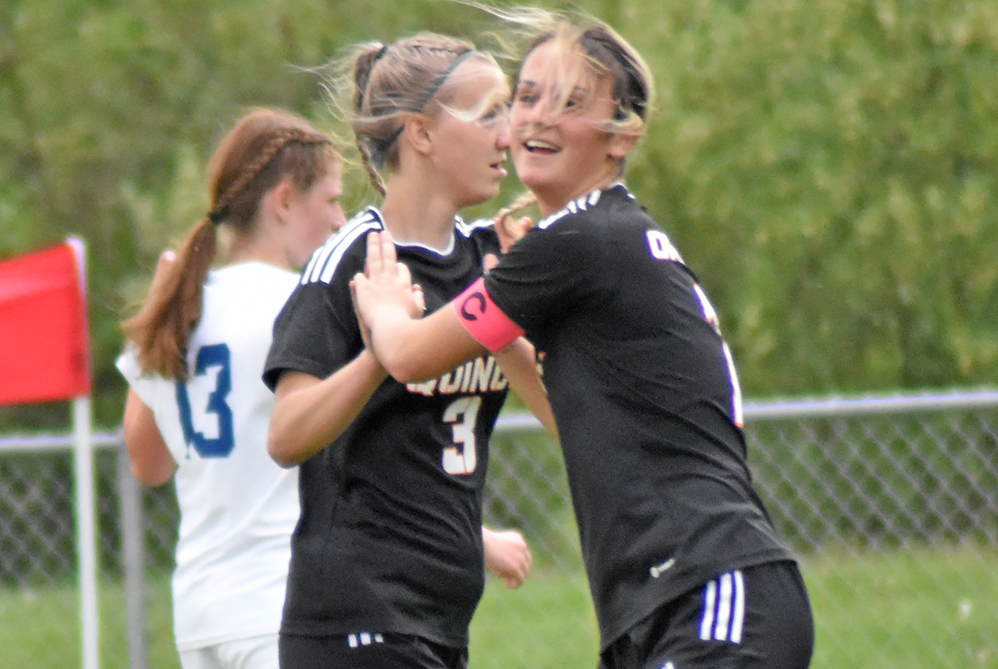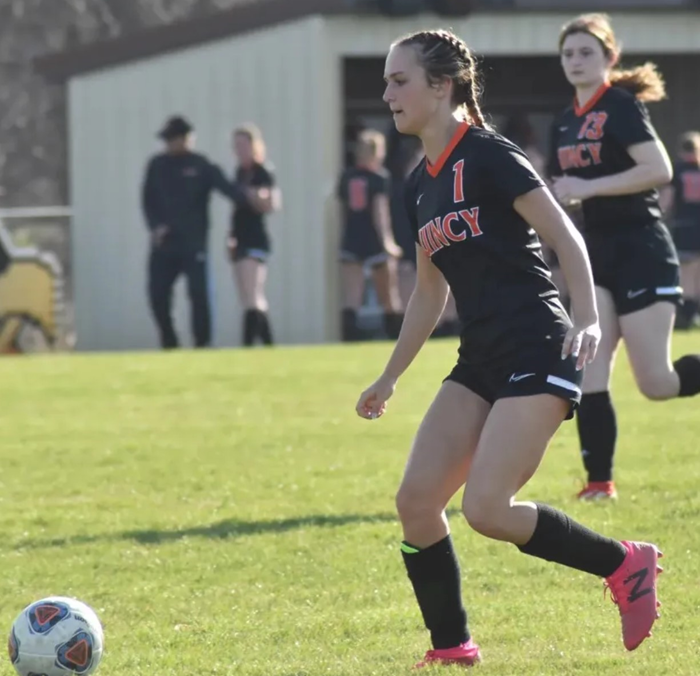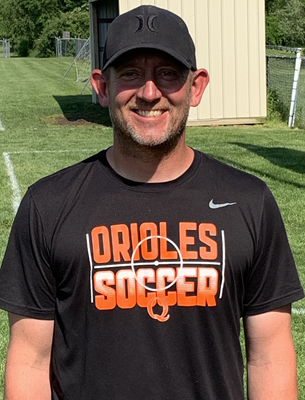
Keep on Coaching
February 1, 2013
By Geoff Kimmerly
Second Half editor
A few weeks ago, I finally got my first chance this season to watch a friend coach his basketball team. After guiding some others at the lower levels, this is his first time running the varsity – something he wasn't sure he wanted to do with a 1-year-old just learning to walk, but a challenge he ended up taking on to the benefit of all those involved.
Simply put, he’s good. I've seen a lot of teams and a lot of coaches over the past 15 years, and although I wouldn't know much of what to do if I were walking the sideline, I felt pretty qualified in telling him I was impressed – even if he didn't buy that I was offering an unbiased opinion. The best news is he’s gone from not sure about this a few months ago to talking about next season.
We know, at least anecdotally, that coaching continues to get more challenging. The time commitment has grown substantially to make running a program a year-round endeavor in a lot of sports at a lot of schools.
That commitment – especially for coaches with children of their own – was a main reason referred to in a New Haven Post-Chronicle story Saturday that noted 23 football coaching openings in Connecticut at one point this offseason. That state has 146 football teams – meaning roughly 15 percent will have new leaders this fall.
And that got me thinking about my friend, about how glad I am he’s given this a shot, and how I've seen so many others either not do so, or not stick around long despite having some pretty nice success.
A study published last winter in Interscholastic Athletic Administration magazine – a product of the National Interscholastic Athletic Administrators Association – noted some predictable results of a study that sought to determine the biggest challenges faced by first-year high school coaches.
The toughest according to the study was balancing the demands of coaching and teaching, experienced by nearly half the respondents – 98 percent of which coached high school teams and 81 percent of which are teachers.
The next six reasons all were noted by at least 30 percent of those in the study – personal fatigue, securing community support, securing and caring for facilities and equipment, parental contact, keeping non-starting players motivated, dealing with schedule interruptions and motivating athletes to achieve consistent, peak performance.
Nothing there is earth-shaking, and most if not all of these challenges are faced by high school coaches regardless of how long they've been in the field. But I got a little more perspective from some of the 32 items that ranked as least challenging to the first-year leaders – keeping in compliance with state and league regulations, dealing with substance abuse issues, teaching sport skills and creating a positive team atmosphere – things that seem most important, and yet appear to be easiest to do. I’m not sure what that tells us – but I think it tells us something.
Click to check out the entire three-page breakdown of the study, plus the researchers’ recommendations to remedy some of what first-year coaches face.
Giving back to Saginaw
I love reading about high-level athletes – like a star-studded group of alums from Saginaw – giving back to where they got their starts.
Pittsburgh Steelers star LaMarr Woodley made a big impact before the start of this school year by donating $60,000 to cover all participation fees for athletes in his former school district. The Saginaw News’ Hugh Bernreuter writes today about how Woodley (Saginaw High), the Philadelphia 76ers’ Jason Richardson (Saginaw Arthur Hill) and former Oakland Raiders standout Stu Schweigert (Saginaw Heritage) have combined to give more than $865,000 back to their home communities.
Bernreuter also mentions the non-monetary contributions of the Golden State Warriors’ Draymond Green (Saginaw High) and former Indianapolis Colts receiver Blair White (Saginaw Nouvel).
Click to read more about it.
Quote(s) of the Week
While rifling through more papers on my desk, I found an article from the Washington Post from Sept. 2011 titled “How high school sports save our schools.” I was drawn to it in part because I spent more than a decade in a newsroom, and it was a piece by a reporter covering education who instead of reporting on school boards and the like, delved into the importance of interscholastic athletics to education as a whole.
He spoke of how participation continues to grow even as resources dwindle, and of data supporting that extracurriculars like sports are more effective than academic classes in teaching leadership, teamwork, time management and “other skills crucial for success in the workplace.” Later, he mentioned a study noting that those who participate in extracurriculars earned more a decade later.
Click here to read the entre piece. These passages struck me most.
“Coaches might be the only faculty members still allowed by our culture and educational practice to get tough with students not making the proper effort. They have the advantage of teaching what are essentially elective non-credit courses. They can insist on standards of behavior that classroom teachers often cannot enforce because the stakes of dismissing or letting students drop their courses are too high. …
“Students do better in activities they choose. If we provide more of them, led by committed adults … that can make a difference. We know the bad news about education. Dropout rates are high. Achievement scores are stagnant. But sports participation is going up, despite pressure to cut it back. Let’s cheer about that and look for a way to draw in more students.”

Hollenbaugh Surpasses Older Sister to Net Quincy's Goal-Scoring Record
By
Scott Hassinger
Special for MHSAA.com
May 28, 2024
QUINCY – Sami Hollenbaugh aspires to become a successful realtor one day, and has the next steps toward that goal mapped out.
 But she already has made a big impact in the world of high school girls soccer as Quincy's striker the last four years.
But she already has made a big impact in the world of high school girls soccer as Quincy's striker the last four years.
Entering last week's 8-0 Division 3 District Quarterfinal win over Springport, Hollenbaugh had scored a school-record 89 career goals. Sami's older sister Emily Hollenbaugh, a 2020 graduate, previously held the mark.
Hollenbaugh's exposure to soccer began as a 5-year-old in the local AYSO programs in Quincy and Coldwater. A year ago, Sami joined the Jackson Jaguars, a travel soccer team, to prepare for her senior year.
"My mom put all us kids into AYSO when I was younger. That's where it all started, and I was also playing softball back then. After a while, I decided just to play soccer, and I've stuck with it ever since,” Sami Hollenbaugh said. “I just like scoring goals,"
Another of her favorite aspects is getting her teammates involved.
"I enjoy other girls who don't have as many opportunities to get chances to shoot and score. I just always want to do what's best for my team," Hollenbaugh said.
Hollenbaugh's two biggest influences are her older sister and her mother Melanie Hollenbaugh.
 "In my freshman and sophomore years, I compared myself a lot to Emily, but then I realized I didn't have to do (that) and just went out to be as competitive as I could,” Sami Hollenbaugh said. “My mom also keeps our stat book, and she's real good about keeping me upbeat and not letting me get down on myself during a match.”
"In my freshman and sophomore years, I compared myself a lot to Emily, but then I realized I didn't have to do (that) and just went out to be as competitive as I could,” Sami Hollenbaugh said. “My mom also keeps our stat book, and she's real good about keeping me upbeat and not letting me get down on myself during a match.”
Quincy (14-4-1) won the Independent Soccer League and looks to capture a second-straight District championship later this week. The Orioles' 2023 season ended with a 7-0 loss to Williamston in the Regional Semifinals.
Hollenbaugh is one of four seniors on an 18-player roster dominated by underclassmen. Piper Eby, Grace Lindsley and Tessa Henry are the Orioles' other seniors.
"This year we have a lot of juniors, new girls and freshmen. It took us a little while to get where we are now, and we've improved a lot,” Hollenbaugh said. “Our midfield is very strong, and offensively we're getting more free balls. We spend an incredible amount of time working on shooting at the goal. I try to get as many reps at practice and at home as possible.”
After graduation, Hollenbaugh plans to study interior design at Michigan State University. Collegiate soccer is not on the radar, but she does plan on playing at the intramural level.
The real estate field has always interested her.
"I've just always enjoyed looking at homes. I go on the Zillow app a lot and have always pictured my family or myself living in a particular home," Hollenbaugh said.
Outside of soccer, Hollenbaugh is involved with National Honor Society, student council and is a member of Quincy's Varsity Club.
Olivet (14-3-3) squares off against Battle Creek Pennfield (13-5-1) in Thursday's other District Semifinal match. Winners will meet in Saturday's 10 a.m. title game with the champion advancing to the Williamston Regional.
"We had some early struggles while some of our younger players learned our system. If we can clean a few things up, I feel we have a good shot to keep advancing," said Quincy's eighth-year head coach Ivan Swift, who had been Hollenbaugh's only coach since she began playing the sport.
 "I started coaching AYSO soccer and have been Sami's coach through the various levels. About a year ago, I reached out and suggested to her that she should play travel soccer to get another coach's perspective. That experience has really helped her grow as a player. You can really see the improvement she's made this spring.”
"I started coaching AYSO soccer and have been Sami's coach through the various levels. About a year ago, I reached out and suggested to her that she should play travel soccer to get another coach's perspective. That experience has really helped her grow as a player. You can really see the improvement she's made this spring.”
Andy Hosmer, also head women's coach at Jackson Community College and Brooklyn Columbia Central, coached Hollenbaugh with the Jackson Jaguars.
"Sami is a very driven person. Records are meant to be broken, and I've tried to let her know all season just where she is at to accomplish those,” Swift said. “After she has graduated, I'll do the same for the other girls. Those kinds of situations help motivate your players to improve.”
Even a leg injury hasn't deterred Hollenbaugh from reaching her goals.
"Sami has battled a pulled right quad most of this season, but has only missed one match. It’s benefited her because now she's developed a good shot with her left leg when she needs to and continues to score. I think that just shows her level of determination," Swift said.
Freshman forward/midfield Laura Bostic is second in scoring for the Orioles with 22 goals, to go with 10 assists. "Laura will be a bright spot for years to come," Swift said.
Makenzie Maynard has 13 goals and four assists, Abby Hinds has nine goals and eight assists, and Sade Harges has scored six goals with three assists. Other Quincy standouts include Mackenzie Maynard, Ciaira Paul, Claire Robertson, Danica Swift, Adriana Welch and Ella Bartell.
"We call Abby 'Big Time' because she's got a real strong leg and distributes the ball very well. She takes most of our free and corner kicks and is kind've our point guard in the middle of the field," Ivan Swift said.
The Orioles are experienced on the defensive backline with three juniors playing key roles. Danica Swift, daughter of the head coach, is in her third varsity season as Quincy's starting goalkeeper.
Quincy's biggest wins this season came over Adrian Lenawee Christian 3-1 in conference play, along with a 4-1 victory over Brooklyn Columbia Central.
 Scott Hassinger is a contributing sportswriter for Leader Publications and previously served as the sports editor for the Three Rivers Commercial-News from 1994-2022. He can be reached at [email protected] with story ideas for Berrien, Cass, St. Joseph and Branch counties.
Scott Hassinger is a contributing sportswriter for Leader Publications and previously served as the sports editor for the Three Rivers Commercial-News from 1994-2022. He can be reached at [email protected] with story ideas for Berrien, Cass, St. Joseph and Branch counties.
PHOTOS (Top) Quincy senior striker Sami Hollenbaugh, far right, celebrates with a teammate after scoring this season. (Middle) Hollenbaugh (1) brings the ball upfield during a match. (Below) Eighth-year Quincy varsity girls soccer coach Ivan Swift has been Hollenbaugh's coach since she began playing soccer at age 5. (Action photos by Troy Tennyson/Coldwater Daily Reporter; Swift headshot by Scott Hassinger.)

